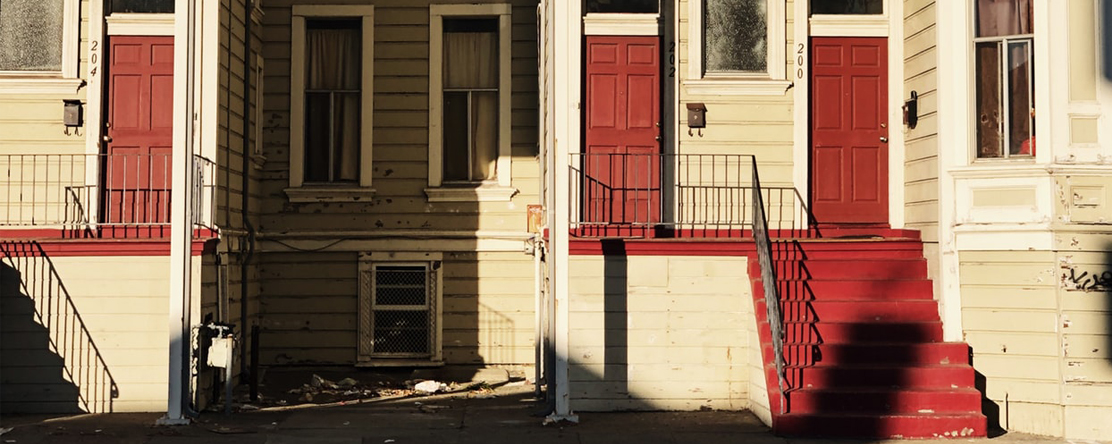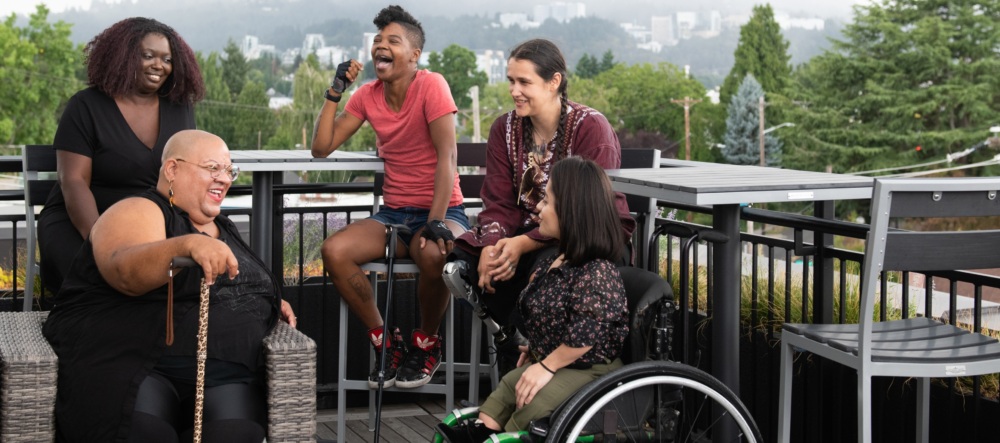
Update
Shifting the Media Conversation on Affordable Housing
-
Focus Areas
Capacity Building & Leadership -
Programs
Berkeley Media Studies Group

It’s no secret that the San Francisco Bay Area has become an increasingly unaffordable place to live. As rapidly rising rents outpace incomes, many residents are being displaced, while others are doubling up into overcrowded units to make staying in their homes possible.
Local media have made the severity of the situation clear, with one Marinscope headline describing the issue as a “crisis without a cure,” and the East Bay Express reporting that affordable housing in East Bay cities like Oakland and Fremont is disappearing faster than anywhere in the country.
Yet, until recently, much local coverage of affordable housing has largely overlooked one critical factor: its link to health. Additionally, many articles have missed an opportunity to explore root causes and solutions.
The good news is that groups like the Alameda County Public Health Department are working change that. While ACPHD’s ultimate goal is to shape policy so that Bay Area residents no longer suffer from housing-related health issues, they are leveraging the power of the media to help them get there faster.
To learn more about ACPHD’s strategies for using the power of the media to influence policy, BMSG talked with Tram Nguyen, a former journalist who leads the department’s housing policy workgroup.
In 2014, ACPHD won an award from The California Endowment for the department’s innovative efforts to advance health equity, particularly its work to make housing more affordable, safe and accessible. What are some of the specific policies that ACPHD is trying to change?
We are focused on the affordability crisis because it is so fundamental to the instability and hardships that undermine health. Reducing displacement and expanding access to safe and affordable housing requires an array of policy strategies that include tenant protections as well as increasing affordable housing production. We have been working on promoting rent stabilization and just-cause eviction ordinances. We also participated in discussions about our county’s housing bond, which will raise capital for the county for affordable housing development and stabilization. We also continue to partner with code enforcement to implement policies addressing mold, which can put children at risk for asthma, and to explore strategies to improve substandard housing conditions without displacing the tenants.
How important is media coverage to the department’s work?
Media coverage is a very important tool for us, because one of our core functions as a health department is to assess and report on the health status of the community, and to communicate health risks and recommended strategies to local governing bodies, stakeholder organizations, health care providers, and the general public. This communication can take the form of public hearings, testimonies and reports, but we also try to keep in mind the power of media narratives in shaping public awareness and developing political will for policy action.
Last summer, dozens of Bay Area news outlets joined an effort to investigate the region’s struggles with homelessness. Did ACPHD play a role in that?
Our parent agency, the Healthcare Services Agency, led the effort to inform that coverage by pulling together a comprehensive packet of information on our county’s homelessness issues and the related programs and services that address it. ACPHD contributed information on our work to address housing policies and to frame housing as a central component for public health.
More recently, ACPHD got coverage in SF Gate and the East Bay Express that explicitly linked public health problems in Oakland to the city’s housing crisis. How did ACPHD go about garnering that media attention, and what challenges did you face?

News coverage on Oakland’s housing crisis and its connection to health.
We were asked by community organizations working on renter protections in Oakland to participate in a press briefing to share data about the impacts of displacement. We created a housing and health brief. Along with PolicyLink, which presented demographic findings about displacement trends, our county health officer Dr. Muntu Davis shared several key findings from our analyses that raise serious public health concerns correlated with the housing crisis. One was a survey on housing that we conducted with staff from programs in Public Health and Behavioral Healthcare, which together serve thousands of clients across the county. This housing survey indicated that displacement and rising rents were identified as exacerbating health risks, as well as undermining our ability to effectively provide services. The second data insight we shared was from epidemiological analysis that showed high correlation between housing stressors (severe rent burden and overcrowding) and key health indicators, such as mental health emergency department visits, asthma emergency department visits, and hypertension hospitalization rates.
These findings were of great interest to local media, I think, because the housing crisis has reached a high level of concern for everybody, and the public health framing is a different way of understanding the impacts of this crisis. We really tried to emphasize that the current conditions are creating a foundation for long-term negative health impacts for our region. The main challenge of doing the press briefing was how to convey a dense amount of data and analysis for reporters to cover accurately and for the public to easily understand. In some of the stories, correlation was mistakenly portrayed as causation. Our objective was to tell a compelling story with the data while providing a solid foundation of analysis and understanding.
How important is timing when it comes to media strategy?
Having worked as both a journalist and a communications strategist in prior jobs, I’m well aware of timing considerations such as not competing with other big news events, or conversely, piggybacking on related coverage. However, I think in today’s media environment the most critical elements are compelling stories and newsworthy data or insights. There are so many ways to get content out, and a constant cycle of publication and dissemination, that your best bet is to focus on developing the strongest story and to make it newsworthy by virtue of the key messengers and the framing.
Do you have any recommendations for how advocates can build relationships with reporters?
I think it’s the same recommendation for building relationships with policymakers and their staff. You want to be seen as a credible and trusted resource, not necessarily only as pitching a story or pushing an agenda. So whenever possible, send newsletters, briefs or other updates; reply promptly and accurately to questions and requests for information; and share insights from your vantage point within a system. Good reporters want to tell nuanced stories in the public interest, and I think that’s our common goal.
What other tips do you have for public health advocates wanting to engage in media advocacy?
Practice thinking in terms of stories as you do your work—what is the issue or highlight, who are the people affected, and why does it matter? Follow the reporters who cover the issues you work on—Twitter especially is a good way to engage journalists—and then begin to engage with them by commenting on articles, sending links to information, and so on. Eventually, when you have a story you want to get out, you will have a good basis from which to garner coverage.
What about reporters? Do you have any suggestions for them to help improve coverage of housing or other public health and social justice issues?
One of our goals is to broaden the public discourse around housing and other public health and social justice issues. We want safe and affordable housing to be increasingly seen as a social good—a human right—that market-based solutions will not necessarily provide. As you cited above, this is a “crisis without a cure” unless we can shift onto a different paradigm of solving the problem. We can’t get out of this limiting box without stories that show us what is at stake and move us to imagine a different way.
What’s next for ACPHD’s housing work?
We are looking to work more regionally on displacement issues, starting with reaching out to our sister health departments to look into how the housing crisis impacts their jurisdictions. Hopefully, together we can raise a regional voice about the importance of housing for health.
Has your organization or campaign engaged the media strategically to advance health equity or social justice policy change? If so, Berkeley Media Studies Group wants to hear about it! Email info@bmsg.org, and your story could be featured in an upcoming blog.
Originally published by Berkeley Media Studies Group
More Updates
Work With Us
You change the world. We do the rest. Explore fiscal sponsorship at PHI.
Support Us
Together, we can accelerate our response to public health’s most critical issues.
Find Employment
Begin your career at the Public Health Institute.



